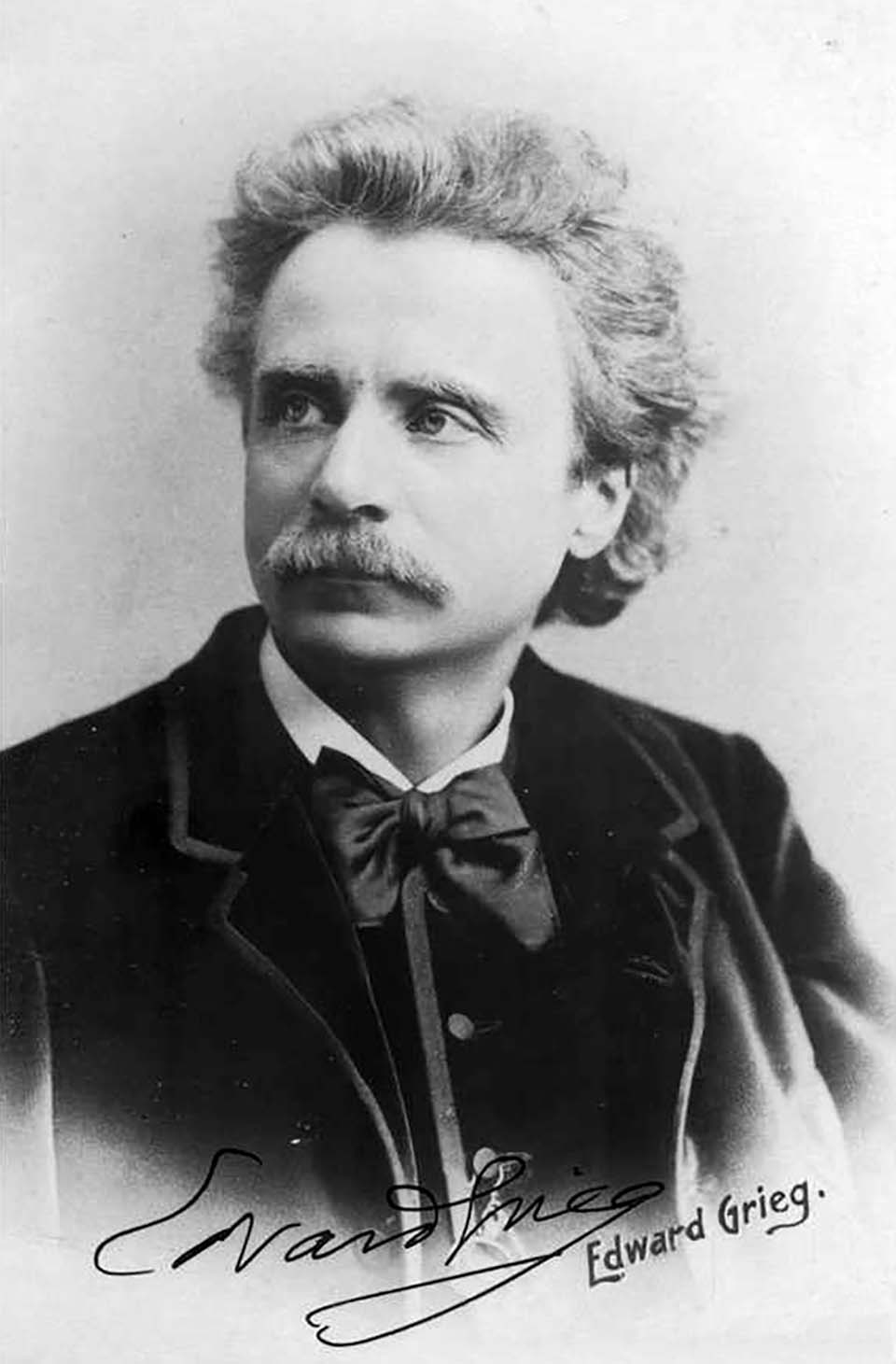
A couple of days ago, I awoke surprisingly early and ventured outside to discover that it was an unusually cool morning, almost European in mood. So having made my usual cups of morning tea (Japanese green jasmine, since you asked) I went outside into the garden to bask in the cool morning air. Honestly, it’s worth getting up early to sample the combination of warm sunlight and cool temperature, despite having to endure the insistent squawks of our local nok ga-wow.
Greig’s orchestral piece Morning Mood, came to mind. Even of you don’t recognize the title, you’re sure to recognise the melody for it’s one of Grieg’s most well-known, having been used countless times in film, radio and television. The piece comes from the incidental music that Grieg (GREEG) wrote in 1875 for Henrik Ibsen’s play, Peer Gynt. Grieg later created two suites from his Peer Gynt music and they have become immensely popular as stand-alone works. One of the most famous movements, In the Hall of the Mountain King has since been done to death in dozens of arrangements in different styles. But it’s a curiously crude piece and even the composer admitted that he hated it. He’s probably not the only one.
Today, Grieg is considered one of the main Romantic era composers and his music is part of the standard classical repertoire. He frequently used Norwegian folksongs and dances in his own compositions and subsequently brought the music of Norway to fame. Writing to his American biographer, Grieg once explained “the traditional way of life of the Norwegian people, together with Norway’s legends, Norway’s history, Norway’s natural scenery, stamped itself on my creative imagination from my earliest years.”
Although Grieg appears to have dedicated himself to establishing single-handedly a national identity for Norwegian classical music, he wrote comparatively little music for orchestra. He was a master of the miniature, both in terms of melody and form, and he seemed to be much more at home writing piano music or music for piano and voice. His most popular orchestral works, the Piano Concerto, the music for Peer Gynt, the Holberg Suite, the Symphonic Dances, and the Norwegian Dances were exceptions to his normal mode of working. He also wrote a symphony when he was twenty but it languished in a library in Bergen with Grieg’s ominous hand-written message on the cover: “Must never be performed”. Of course, it was eventually, though not until over a hundred years later.
The Norwegian Dances were first published in 1881 as pieces for four hands on one piano. This was a popular format at a time when public orchestral concerts were comparatively rare events, and usually limited to large cities with concert halls. Many orchestral works were transcribed for piano duet and the format became immensely popular especially among amateur pianists who rarely had the opportunity to attend orchestral concerts. It was the most convenient way of becoming familiar with the concert repertoire. The four movements are derived from traditional Norwegian melodies which Grief had found in a collection published thirty years earlier. In 1888, Grieg’s piano duets were orchestrated by the distinguished Czech violinist, Hans Sitt. This is the version performed on this video.
It’s a brilliant orchestration too. Each of the four dances follows a similar three-part structure, with the outer sections contrasted with the middle. The first dance is a Halling, a rural and somewhat acrobatic dance traditionally performed by young men at weddings and parties. The second dance (06:29) might sound familiar, it’s a delightful elegant dance with a brief but furious middle section. This is Greig at his most charming and delightful. The third dance (08:57) sounds a bit like a slightly cheeky circus march in which the dreamy middle section perhaps evokes the stillness of the Norwegian countryside before the march theme returns. The last movement (12:18) beings darkly but the music soon gives way to a swaggering dance with catchy syncopations in the melody. The dance develops in an almost symphonic style and shows the composer’s extraordinary inventiveness. Grieg transforms what are essentially simple country dances into music of symphonic vision.
 |
 |
 |





